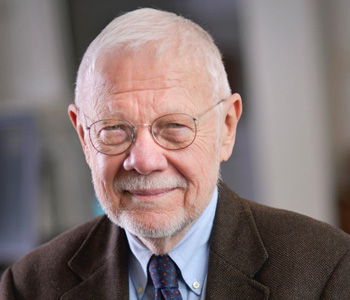R. Daniel Kelemen
Eurolegalism: The Transformation of Law and Regulation in the European Union
Harvard University Press
378 pages, 6 x 9 1/4 inches
ISBN 978 0674046948
Europe’s legal and regulatory landscape is changing.
Historically, regulation through litigation was unheard of in European democracies. The United States was the land of “adversarial legalism,” famous—or perhaps infamous—for its activist courts, rapacious lawyers, class action lawsuits, massive damage awards, and more generally litigious, adversarial relations between government, industry and interest groups. In west European democracies, by contrast, approaches to regulation were much more informal, cooperative and opaque, as closed, insider networks of bureaucrats and regulated interests developed regulatory policy in concert, with little influence from courts and private litigants.
Eurolegalism explores how and why the process of European integration is transforming traditional patterns of law and regulation across Europe.
While we are certainly not witnessing a convergence of the two systems, it is clear that patterns of law and regulation in the European Union (EU) are shifting toward a distinctive European variant of American legal style—what I call “Eurolegalism.”
European integration plays a central role in driving this transformation. The EU’s fragmented political structure and its project of market integration encourage policy makers to enact more and more detailed, judicially enforceable rules—often framed as individual rights—and to back them with the threat of enforcement litigation by public authorities or private actors.
In a sense, Eurolegalism is a book about how the EU attempts to govern and what impact it has on its member countries.
Critics like to rail against the EU’s supposedly massive bureaucracy. In fact, the EU’s bureaucracy is tiny—with around 25,000 staff it is about the size of the administration of a mid-sized European city.
With a small bureaucracy like that, how can the EU hope to pursue any common policies across a Union of twenty-seven member countries and 500 million people?
The answer is that the EU relies on the rule of law. It creates many rights and other legally enforceable obligations, and then it relies national courts and interested private actors—firms, citizens, interest associations—to enforce them. But in relying so much on law, lawyers and courts, the EU is inadvertently encouraging a judicialization of policy-making processes across Europe.
I have long done research on comparative regulatory policy—comparing how the US and European democracies approach various areas of regulation, from the regulation of financial markets, to environmental protection, to consumer safety, to labor market regulation. Much of my research has also focused on the process of European legal integration—examining the role that EU law has played in the construction of Europe. This book ties together those interests.
Eurolegalism shows that the EU has developed a distinctive legal style that is transforming patterns of law and regulation across the member states.
I begin the book with the story of passenger rights in the EU—a story which illustrates many of the dynamics described in the book.
Many readers will be familiar with the posters and displays on computer monitors in airports across Europe that remind travelers of their rights under the EU passenger rights directive. “Denied boarding? Cancelled? Delayed for a Long Time?” the posters ask. They then instruct travelers on what their rights are and how to file compensation claims.
Thousands of disgruntled passengers have brought such claims under the EU directive. European airlines formed an association to challenge the directive’s legality before the European Court of Justice, but lost the case. And the Court has continued to make expansive interpretations of the directive, bolstering passenger rights.
The European Commission has taken legal action against member state governments who failed to adequately implement the directive. And a niche industry of compensation claims firms has emerged—working on a contingency fee basis—to help passengers file claims against the airlines.
This chain of legal events would have been unimaginable thirty years ago. Back then, the entire story would have been wholly out of step with prevailing patterns of law and regulation. Today, the air passenger rights saga is quite typical of broader trends in EU regulation.
There are two sides to the rise of Eurolegalism.
On the one hand, critics might view it as a kind of American disease. The growing role of law, lawyers, and litigation will bring with it some of the pathologies we are all too familiar with here in the US, such as high legal expenses, slow, conflictual regulatory procedures and adversarial relationships between stakeholders in the policy process.
On the other hand, Eurolegalism may increase the transparency of regulatory processes, enhance access to justice, and ultimately force public officials to be more accountable for their policy decisions.
Whether the positives will outweigh the negatives remains to be seen. What is clear is that the rise of Eurolegalism will affect not just the legal system but European democracy itself. Growing judicial power and the tendency to frame policies as individual rights will make it more difficult for countries to pursue consensus policies formulated to serve broad public interests where judges declare that these conflict with individual rights.
With the Eurozone in crisis and some skeptics questioning the long-term viability of the EU, it is a good time to remember the key role that the EU legal system plays in holding the EU together.
The EU is a community under the rule of law, and, whatever its present challenges, it is a community that has promoted democracy, peace and prosperity across Europe over the past half century. The rise of Eurolegalism may bring with it an excess of law, lawyers and litigation, but we may simply have to accept this as a small price to be paid to maintain European unity.




We don't put paywalls. We don't distract you with ads. We don't sell your data.
Please help to keep this running!